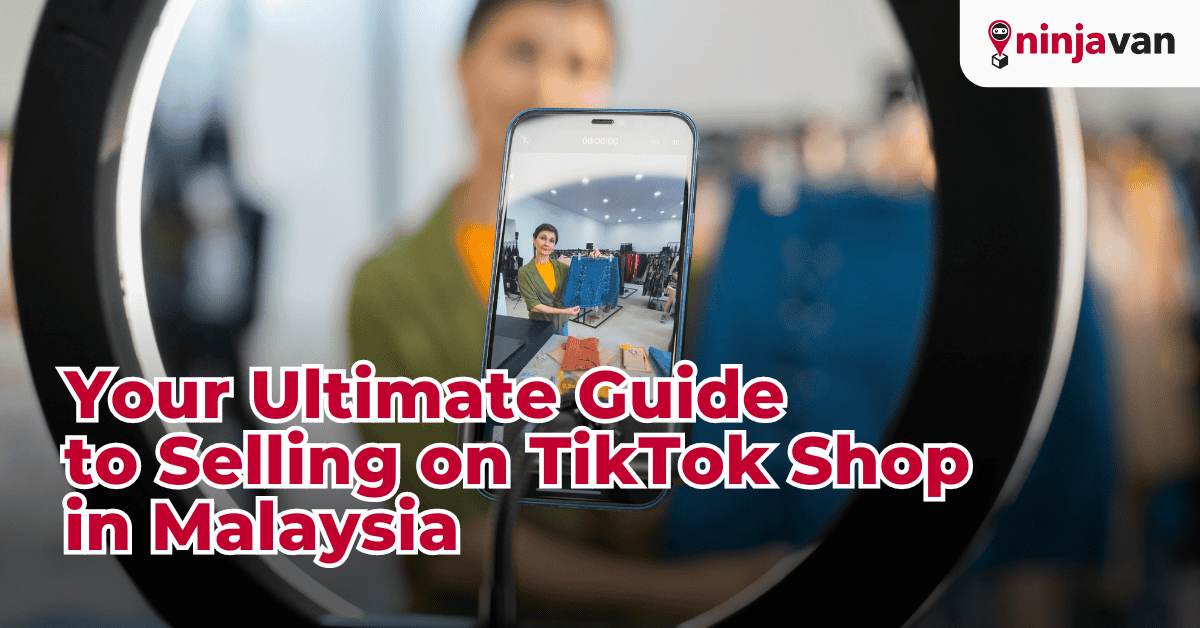The e-commerce boom in Malaysia is undeniable, and the profound influence of social media on it cannot be overlooked. Remember when we previously dived into the world of online sales? If that rings a bell, brace yourself for an even deeper journey. If it doesn’t, I’d suggest you click here to grasp the essence of optimising your website for e-commerce, and then dive back into this piece.
This time around, our spotlight is on amplifying your e-commerce revenue by exploring social media sales optimization. Without further ado, let’s jump right into it!
Why Social Media is Vital for E-commerce Sales?
In today’s swiftly changing digital terrain, social media has transcended its initial purpose of mere likes and comments. Platforms such as Facebook, Instagram, and TikTok have emerged as potent sales channels for e-commerce aficionados. A 2023 survey by Rakuten Insight revealed a compelling hierarchy: 57% of Malaysian respondents made online purchases via Facebook, followed closely by Instagram and TikTok, both sitting at 44%. Further illuminating Facebook’s dominance, Meltwater’s data from January 2023 showcased that Facebook accounted for a staggering 75.27% of web traffic referrals for businesses in Malaysia.
And the opportunities don’t stop there. With around 26.8 million social media users in Malaysia, equating to 75.5% of the total population, imagine the sheer reach and impact of your content going viral! With such vast potential, it’s evident that tapping into the power of platforms like Instagram and TikTok, alongside Facebook, can offer unprecedented growth and visibility for your e-commerce business.
Hmm… Does that mean you can sell anything easily online with the help of social media? Not without strategies, you can’t! So, let’s tap into it right now!
6 Key Strategies to Optimise Your Social Media Sales Channels
- Find the ideal platforms for your brand
Each social media platform appeals to a distinct set of audience demographics. Gaining insights into your target market enables you to select platforms that best match your brand’s sales aspirations. Khoros’s data illustrates this variance: Facebook predominantly caters to an audience aged 30 to 65+, while TikTok and Instagram captivate younger users ranging from 13 to 49.
By aligning with platforms frequented by your desired audience, you enhance the effectiveness of your marketing efforts, ensuring your messages reach those most likely to engage and convert. Understanding these dynamics is crucial as it not only maximises reach but also optimises your return on investment by focusing energy and resources on the most relevant platforms.
- Prioritise value-driven content and genuine engagement
In the digital world, content is king. But It’s not just about producing content in bulk; it’s about ensuring each piece delivers genuine value. Instead of relentless sales pitches, craft content that’s relatable, insightful, and captivating. Harness the appeal of micro-content, like succinct videos and enticing teasers, to engage potential customers.
But beyond the content itself, consider the manner of your communication. The way your brand engages with its followers sets the stage for building deeper connections. Authentic and consistent interactions that resonate with your brand’s ethos cultivate trust, transforming casual followers into loyal customers, especially on platforms like Facebook, Instagram, and TikTok.
- Embrace the live-selling phenomenon
Live-selling has transformed the dynamics of social media sales. With real-time product demonstrations and immediate customer interactions, platforms like TikTok and Instagram have become hotspots for this sales strategy, thanks to their engaging live features. Conducting on-the-spot product showcases, answering questions in real-time, and securing sales immediately not only boosts revenue but also enhances customer trust and solidifies brand loyalty.
Consider hosting casual live Q&A sessions, where you engage with customers in a more relaxed setting. This approach not only addresses their queries but also positions your brand as a relatable authority in its field, further deepening audience trust.
- Harness the power of user-generated content (UGC).
As consumers ourselves, we understand the undeniable influence of word-of-mouth in our purchasing decisions.
Similarly, online audiences rely heavily on social media to ascertain product authenticity. Encouraging satisfied customers to share their positive experiences, and seamlessly weaving those testimonials into your live-selling sessions, not only bolsters your credibility but also strengthens the trust the community on platforms like Facebook, Instagram, and TikTok have in your brand.
- Unlock the social media influencer strategy
Influencers aren’t just popular figures—they’re curated voices that resonate with targeted audiences. While mainstream influencers can reach the masses, don’t overlook the potency of micro-influencers. Despite having a smaller follower count, micro-influencers often boast higher engagement rates and cater to a niche, loyal audience, making them ideal partners for brands looking to tap into specific demographics.
Their organic relationship with followers means that their endorsements carry a unique weight, often perceived as genuine recommendations rather than paid promotions. By partnering with the right influencer—whether mainstream or micro—your brand isn’t just spotlighted; it’s seamlessly woven into a trusted narrative, reaching the precise demographic you aim for.
Moreover, these collaborations offer dual benefits: while influencers infuse authenticity and relatability into your brand story, their feedback can also provide invaluable insights into customer preferences and perceptions. In this influencer-driven market, it’s not about sheer visibility but crafting a shared narrative that genuinely resonates.
- Strategically deploy social media ads
The deployment of social media ads is not just about visibility—it’s about channelling that visibility directly to your e-commerce landing page, transforming passive viewers into active customers. By tailoring ads that not only captivate but also have a clear call-to-action, you can seamlessly guide your audience from an Instagram story or a Facebook post straight to your product listings.
Furthermore, the advanced targeting tools available today ensure that these ads reach the right demographic, maximising engagement and conversion rates. When executed adeptly, social media ads act as a bridge, connecting potential customers to your e-commerce storefront and bolstering sales.
Wait! There’s More.
While leveraging social media strategies is crucial, there’s another powerful tool in the e-commerce arsenal: discounts and promotions. In our upcoming Grow Your Online Sales article, we’ll dive into the art and science of offering timely discounts, crafting irresistible promotions, and utilising these tools to not just drive sales.
Psst! When you’ve successfully boosted your social media sales, don’t let shipping be a bottleneck. With Ninja Van, TikTok shop’s premier logistics partner, you can ensure seamless e-commerce shipping that complements your social media sales efforts. Elevate the shopping experience for your customers and solidify your brand’s reputation all in one go.







